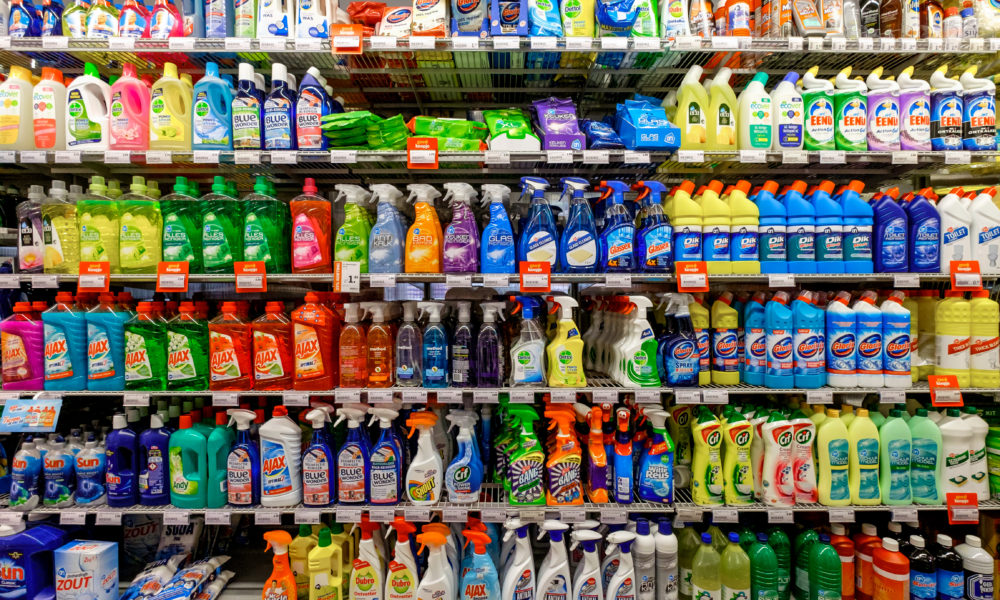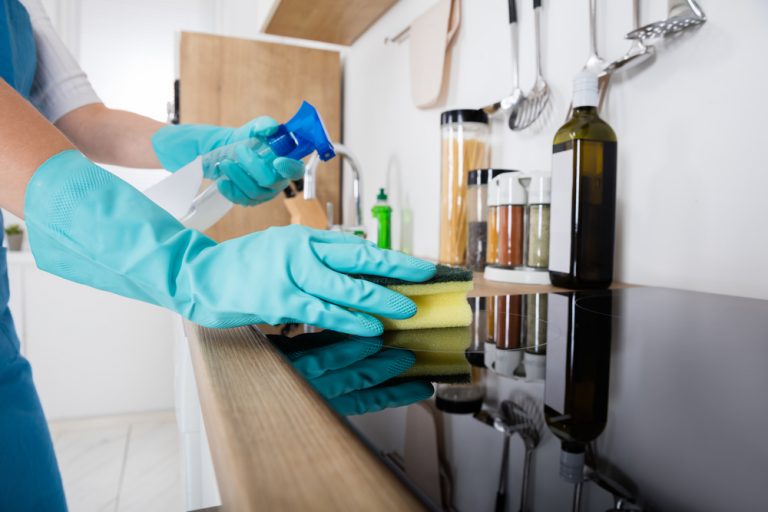Light Bulb Guide: How to Choose LED Bulbs
Shopped for light bulbs lately? If you have, you may have noticed that most bulbs sold now are LED (light emitting diode) bulbs. Old-fashioned incandescents have all but vanished from store shelves, and the popularity of CFL (compact fluorescent light) bulbs is on the wane. That’s because, although they’re more energy efficient than incandescents, CFLs just can’t compete with the energy efficiency and light quality of LED bulbs. And, while you’re lucky to get two to five years of life from a CFL bulb, LED bulbs can last 20 years or more. But trying to figure out which LED bulbs to buy can lead to a lot of head scratching. Here’s what you need to know before you shop.
Read the Label
Most of the information you need to pick the right LED light bulb is right there on the packaging, but you won’t find it on the front. Look for the Lighting Facts label on the back or side of the packaging, and pay particular attention to two terms: ‘Brightness’ and ‘Light Appearance.’
Brightness: Forget Watts — Think Lumens
Gone are the days when the wattage on a light bulb package tells you how bright it is. When shopping for an LED bulb, look for the number of lumens directly across from ‘Brightness’ on the Lighting Facts label. Wattage equivalents, usually on the front of the package, are only meant to get you in the ballpark. If you’re replacing a 100-watt incandescent bulb, you’ll want an LED that produces about 1,600 lumens. A replacement for a 40-watt incandescent bulb should produce about 450 lumens.
Light Appearance: Choose Warm or Cool to Suit Your Use
‘Light Appearance’ on the Lighting Facts label refers to color temperature, which is measured as Kelvin (K). For table lamps or living room light fixtures, choose a bulb of about 2,700 to 3,000 K to get a warm light similar to the light from older incandescent light bulbs. For task lighting in places like workshops and laundry rooms, pick a bulb of about 5,000 K for cooler, bluish light that looks more like natural daylight.
Enclosed Fixtures Need Special Bulbs
Some LED light bulbs can last for decades, but only if the heat they generate has a way to dissipate. If it can’t, heat will damage the electronics inside the bulb and it will fail prematurely. If you need to buy a bulb for a fully enclosed fixture, read the packaging carefully to make sure it’s approved for that use. Bulbs made for enclosed fixtures have a more efficient thermal design and are manufactured using components that will withstand higher temperatures
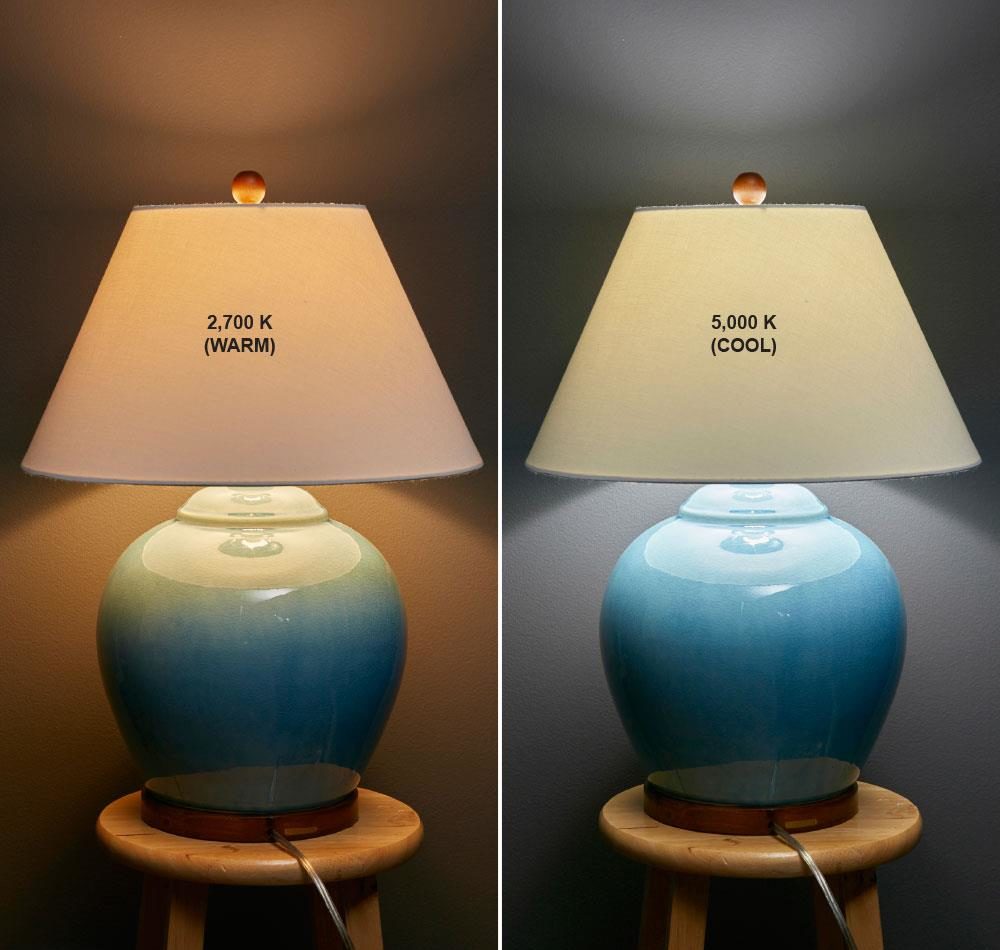
Choosing the Best LED Light Bulb
LED lighting has hit the lighting market with a crash, leaving many wondering which lights or light bulbs to choose – find out what you need to know.
There is a huge range of lighting available for domestic homes these days. As incandescent lamps have given way to halogen bulbs and then compact fluorescent lights, CFLs and now with the transition to LEDs, there is a huge amount to understand. The choice is not as easy as it was a few years ago
Many light bulbs and lighting is now LED based, but these lights are more expensive, so the first question is whether it is worth buying LED lights, or whether some of the other technologies offer better value.
LED lights vs other types – choice of technology
LED lights and light bulbs are now being widely sold and prices are coming down. However they are still more expensive than other types.
Another advantage of LEDs is that they can tolerate being turned on and off far better than CFLs. One example os that of wanting to use a low energy bulb on lights that are triggered by a motion sensor, PIR for external lighting. In windy weather PIRs are triggered very easily and can be always turning on and off. CFLs may only last a very short while, but LEDs can last very much longer.
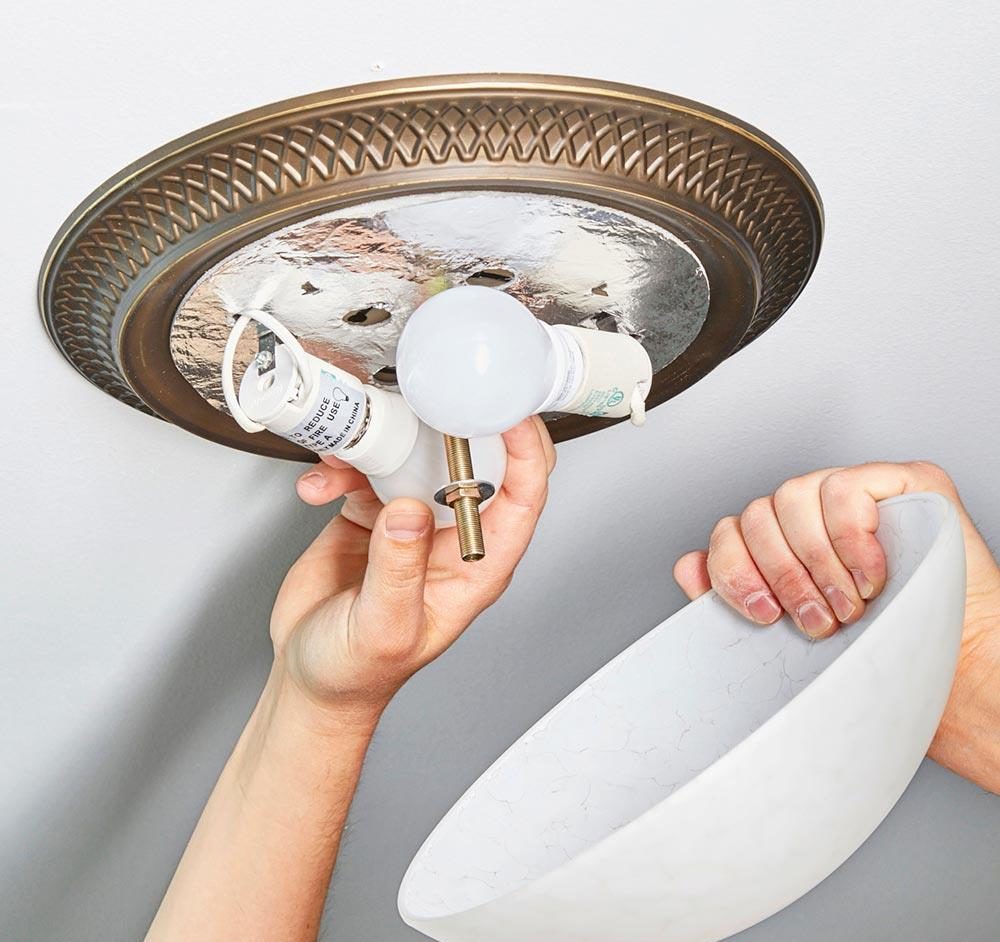
Everything about LEDs: Learn the basics of LED lighting and how to power!
LEDs are appropriate for many lighting applications, they are designed to produce a lot of light from a small form factor while maintaining fantastic efficiency. Here at LEDSupply there are a variety of LEDs for all kinds of different lighting applications, the trick is knowing how to use them. LED technology is a tad different than other lighting that most people are familiar with. This post is here to explain everything you need to know about LED lighting: how to power LEDs safely so you get the most light and the longest lifetime possible.
What Exactly is an LED?
An LED is a type of diode that turns electrical energy into light. For those that don’t know, a diode is an electrical component that only works in one direction. Basically an LED is an electrical component that emits light when electricity flows through in one direction, from the Anode (positive side) to the Cathode (negative side).
5mm LEDs
5mm LEDs are diodes inside a 5mm diameter lens with two thin metal legs on the bottom. They are used in applications where a lower amount of light is required. 5mm LEDs also run at much lower drive currents, maxing out at around 30mA, whereas Surface Mount LEDs require a minimum of 350mA. All our 5mm LEDs are from top manufacturers and are available in a variety of colors, intensities and illumination patterns. Through-hole LEDs are great for small flashlight applications, signage and anything where you are using a breadboard as they can be used easily with their leads. Check out our guide to setting up 5mm LEDs for more info on these tiny light sources.
Surface Mount LEDs (SMD)
urface Mount LEDs are diode(s) that can be placed on a substrate (circuit board) with a silicon dome over the diode to protect it (see Fig. 1). We carry high-power Surface Mount LEDs from industry leaders Cree and Luxeon. Both are excellent in our opinion, that is why we carry them after all. Some prefer one over the other but that comes with experience and knowing what to look for. Cree tends to have higher listed Lumen outputs and are a market leader in the High-Power LED sector. Luxeon, on the other hand, has excellent colors and thermal control.
High Power LEDs come as bare emitters (as seen in Fig. 1) or mounted to a Metal Core Printed Circuit Board (MCPCB). The boards are insulated and contain conductive tracks for easy circuit connections. Our 20mm 1-Up and 3-Up star board designs are the best sellers. We also offer QuadPod’s which can hold 4 high power LEDs on a board slightly larger than the 20mm stars (see Fig. 2). All our high power LED options can be built on a linear design as well. The LuxStrip can house 6 LEDs per foot and are easily connected up to 10 feet long.
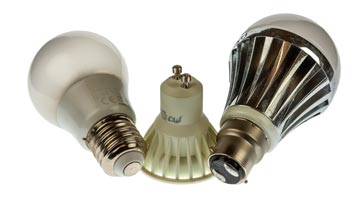
Choosing LED light bulbs
Benefits of LEDs
Climate-friendly because they last so much longer than old-fashioned incandescent light bulbs (based on manufacturer’s claims).
Waste less energy – they are very efficient and very long life: use up to 85% less electricity than traditional incandescent light bulbs.
Most LED’s cost less than $10 per bulb, some as little as $3.
Each LED bulb you buy to replace an incandescent light bulb can save you between $100 and $300 over its life (depending on the wattage of the bulb you replace).
Good for all general lighting around the house.
Features
Available in many different types, including as standard lightbulbs, candles, spotlights and recessed downlights.
Instant full brightness.
‘Warm white’ and ‘cool white’ light colours to choose from. We recommend warm white as a more comfortable light suitable for homes.
For recessed downlights, replacing the whole fitting with a dedicated LED downlight is recommended.
Better quality of light than CFLs (the spiral shaped light bulbs).
Available as dimmable and non-dimmable bulbs that can change their light colour or brightness even without the need for a dimmer switch.
Where to buy
Most hardware stores, supermarkets and specialty lighting stores sell LEDs
Base: Make sure the base of the new bulb is the same as the one you’re replacing. For standard light bulbs, check if you need a bulb with bayonet or screw fitting. To replace halogen spotlights, check if you need a low-voltage (12 V) MR16 (also called GU5.3) bulb with two sharp pins at the bottom, or a mains-voltage (240 V) GU10 bulb with two studs at the bottom – they look very similar but are not interchangeable.
Brightness: If you want to replace an existing incandescent bulb with an LED, use the wattage of the old incandescent as a guide. The packaging of LEDs usually indicates the equivalent wattage of incandescent bulbs that produce a similar brightness. If you want to buy an LED to replace a standard incandescent bulb, chances are the LED will appear brighter than the equivalent incandescent. This is because the beam angle of LEDs is narrower, so the light comes out more focussed.
LED Lighting
The light-emitting diode (LED) is one of today’s most energy-efficient and rapidly-developing lighting technologies. Quality LED light bulbs last longer, are more durable, and offer comparable or better light quality than other types of lighting
Energy Savings
LED is a highly energy efficient lighting technology, and has the potential to fundamentally change the future of lighting in the United States. Residential LEDs — especially ENERGY STAR rated products — use at least 75% less energy, and last 25 times longer, than incandescent lighting.
How LEDs are Different
LED lighting is very different from other lighting sources such as incandescent bulbs and CFLs
Key differences include the following:
Light Source: LEDs are the size of a fleck of pepper, and a mix of red, green, and blue LEDs is typically used to make white light.
Direction: LEDs emit light in a specific direction, reducing the need for reflectors and diffusers that can trap light. This feature makes LEDs more efficient for many uses such as recessed downlights and task lighting. With other types of lighting, the light must be reflected to the desired direction and more than half of the light may never leave the fixture.
Heat: LEDs emit very little heat. In comparison, incandescent bulbs release 90% of their energy as heat and CFLs release about 80% of their energy as heat.
LED Products
LED lighting is currently available in a wide variety of home and industrial products, and the list is growing every year. The rapid development of LED technology leads to more products and improved manufacturing efficiency, which also results in lower prices. Below are some of the most common types of LED products.
